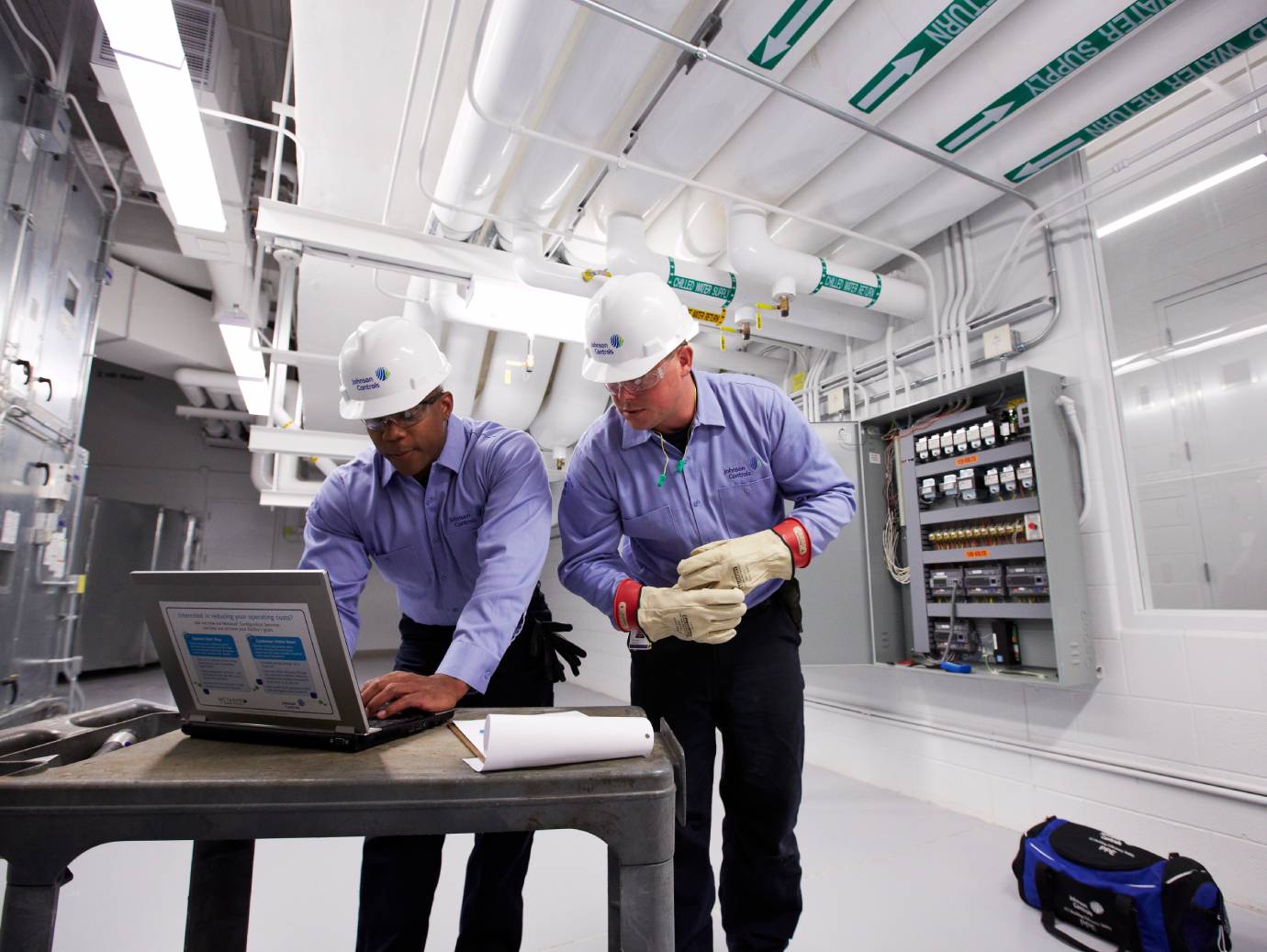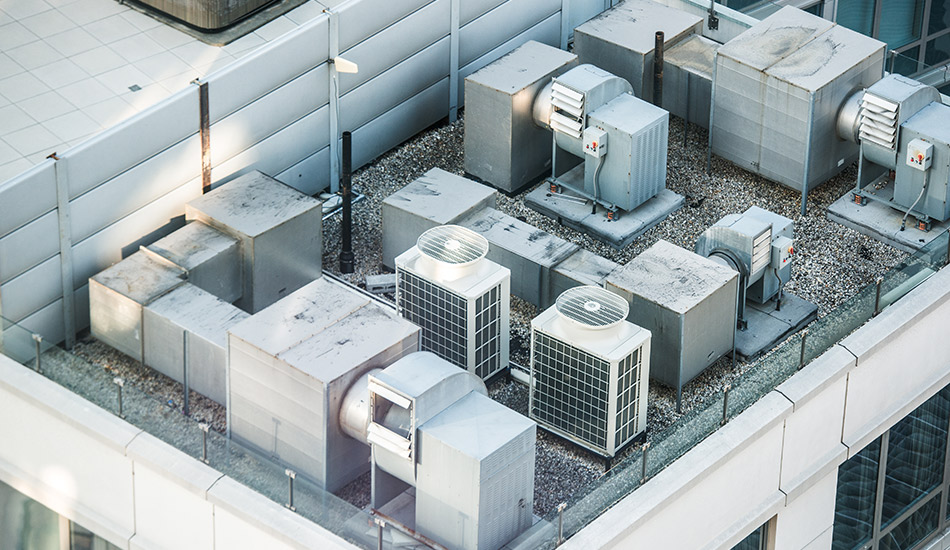Just How a Heatpump and Furnace Work With Each Other to Enhance Your Home's Heating Efficiency
Recognizing exactly how a heat pump and heater collaborate is essential for home owners looking for efficient home heating options. Each system has its strengths, giving a well balanced method to home comfort. The heatpump excels in moderate temperatures, while the heater provides rapid heat during severe cold. This synergy not only decreases power prices but likewise improves the life-span of both devices. What variables influence this cooperation, and how can homeowners optimize their advantages?
Comprehending Heat Pumps: Just How They Work
Lots of people may be unknown with their internal workings, warm pumps play a crucial function in contemporary home heating systems. These devices operate by moving warmth from one place to an additional, utilizing the concepts of thermodynamics. In colder months, a heatpump extracts warmth from the outside air, ground, or water, and transfers it inside to warm up the home. Alternatively, during warmer months, it can turn around the procedure, serving as an air conditioner by getting rid of heat from inside to the outside.Heat pumps include an evaporator, condenser, compressor, and expansion valve. The refrigerant within the system soaks up warm as it vaporizes at reduced temperature levels and pressures. The compressor after that boosts the pressure and temperature level of the cooling agent, permitting it to launch heat as it condenses. This effective procedure can substantially reduce energy consumption compared to conventional heating methods, making heatpump a sustainable choice for climate control in homes.
The Duty of Heaters in Home Home Heating
Heaters play a vital function in home heating by supplying a trusted resource of heat throughout the cooler months. They operate by producing warmth via combustion or electric resistance, distributing it throughout the home through air ducts or glowing systems. The performance of a furnace is usually determined by its Yearly Gas Usage Effectiveness (AFUE) rating, which suggests exactly how successfully the system converts fuel into heat.Furnaces can use different power resources, including gas, power, lp, or oil, allowing house owners to pick the most suitable alternative for their requirements. Unlike heatpump, which may struggle in extreme chilly, heating systems maintain constant performance, making sure that indoor temperature levels remain comfortable despite outdoor problems. Additionally, modern heating systems typically come geared up with innovative technology, such as variable-speed blowers and clever thermostats, boosting their efficiency and responsiveness. This convenience makes heaters an essential part in comprehensive home heating strategies.

Advantages of Making Use Of Both Equipments With Each Other
Integrating the strengths of both furnaces and warmth pumps can lead to a more effective and efficient home heating remedy. Using both systems enables property owners to make use of the warm pump's power efficiency during milder temperature levels while relying upon the heater for even more severe cold problems. This dual strategy can greatly minimize power prices, as warmth pumps consume less electrical energy than typical heating methods when temperatures are moderate.Additionally, making use of both systems together can enhance comfort degrees in the home. Warmth pumps can provide regular, also heating, while heaters can swiftly raise ambient temperatures when required. The integration of both systems can extend the lifespan of devices by minimizing wear and tear on each unit, as they share the workload. Inevitably, house owners can enjoy a balanced, cost-efficient home heating solution that changes perfectly to varying climate conditions, guaranteeing a warm and welcoming home throughout the winter season.
Just How Warmth Pumps and Furnaces Enhance Each Other
When homeowners incorporate heatpump and heating systems, they create a corresponding heating unit that makes the most of efficiency and convenience. Heatpump run by moving heat from the outside air or ground, making them very efficient in modest climates. They succeed throughout milder temperatures, offering cost-efficient home heating. On the other hand, furnaces produce warm via burning or electrical resistance, delivering strong, prompt heat throughout extreme cold conditions.The mix of these 2 systems permits vibrant adjustments based upon temperature fluctuations. Throughout warmer months or milder winter days, the warmth pump can take the lead, preserving energy and reducing prices. As temperatures decrease, the furnace can seamlessly engage, guaranteeing constant warmth throughout the home. This harmony not only maximizes energy usage yet additionally improves the lifespan of both systems, as each device operates within its optimal performance range. Together, they develop a balanced more tips here atmosphere that adapts to differing climate needs.
Optimizing Efficiency: Tips for Homeowners
Property owners can boost their home heating performance via several sensible approaches. Developing a normal maintenance routine, incorporating smart thermostat technology, and executing effective insulation and sealing remedies are essential steps. These measures not just boost convenience however likewise decrease power expenses.
Routine Maintenance Set Up
To assure maximum heating performance, developing a regular maintenance timetable is important for any type of home. Home owners must focus on regular assessments of both heatpump and heating systems to establish peak efficiency. This includes changing air filters every one to 3 my site months, as clogged filters can considerably lower efficiency. Additionally, organizing expert upkeep a minimum of once a year enables service technicians to identify and resolve potential issues before they rise. Property owners ought to also clean up the heat pump's outside system to stop particles accumulation that can impede air flow. By adhering to a normal upkeep routine, homeowners not just improve their furnace' efficiency however also expand their life-span, leading to higher convenience and reduced energy costs throughout the cooler months.
Smart Thermostat Assimilation
Integrating a smart thermostat into a home heating system can substantially enhance energy effectiveness, especially as it enables specific control over temperature settings. These devices can discover the homeowner's timetable and preferences, automatically changing the temperature level to optimize comfort while lessening power use. For instance, they can lower heating during times when the home is vacant, reducing unnecessary consumption. Numerous clever thermostats also give real-time power usage information, allowing property owners to make enlightened decisions concerning their heating practices. Additionally, remote accessibility by means of mobile phone apps enables individuals to adjust settings from anywhere, guaranteeing the home is cozy upon return. Overall, smart thermostat integration not just improves comfort however significantly contributes to energy savings and effectiveness.
Insulation and Sealing Solutions
Smart thermostats play a vital role in power efficiency, yet their performance can be considerably improved by appropriate insulation and sealing solutions. Homeowners ought to focus on shielding attics, wall surfaces, and floorings to lessen warmth loss. Top notch insulation products, such as spray foam or fiberglass, can substantially enhance thermal resistance. Furthermore, sealing voids around doors, air ducts, and home windows avoids chilly air infiltration and warmth getaway. Weatherstripping and caulking work techniques for addressing these leakages - heat pump installation ooltewah tn. Routine assessments for Discover More Here air leaks, together with making use of blower door examinations, can help identify issue areas. By purchasing insulation and securing, home owners can maximize the efficiency of their home heating systems, ultimately bring about minimized energy intake and lower utility bills
Typical Myths Regarding Warmth Pumps and Furnaces
What misconceptions surround heat pumps and heating systems? Several people incorrectly believe that warmth pumps are inadequate in chillier environments. Actually, contemporary heatpump are made to operate successfully even in low temperature levels, supplying reliable home heating throughout winter months. One more common misconception is that heating systems are always more efficient than heatpump. However, this relies on the details power resources and performance rankings of the devices concerned. Some might also assume that making use of both systems at the same time is unneeded, yet in fact, this combination can optimize home heating efficiency, specifically throughout extreme weather. Additionally, people usually presume that warmth pumps require consistent maintenance, when truthfully, they have comparable maintenance needs to traditional heating unit. By debunking these myths, property owners can make more informed choices concerning their heating alternatives, inevitably bring about enhanced convenience and energy performance in their homes.
Upkeep Considerations for Combined Solutions

Often Asked Questions
Can Warm Pumps Job Successfully in Incredibly Cold Climates?
Warmth pumps can battle in incredibly chilly climates because of decreased performance and heat removal constraints. Nonetheless, improvements in innovation have resulted in models developed for much better efficiency in such conditions, enhancing their feasibility in extreme settings.
How Lengthy Do Heat Pumps and Furnaces Normally Last?
Warm pumps normally last 15 to twenty years, while heating systems have a life expectancy of 15 to three decades. Regular maintenance can expand their longevity, making certain reliable procedure and reducing the requirement for premature substitutes.

What Is the Typical Expense of Setting Up Both Equipments?
The average expense of mounting both a warm pump and a heater commonly ranges in between $5,000 to $10,000 - furnace replacement. Variables affecting this price consist of system dimension, installation complexity, and local labor rates
Exist Tax Obligation Incentives for Making Use Of Energy-Efficient Home Heating Equipments?
Many property owners ask about tax rewards for energy-efficient heating unit. Various federal and state programs typically use rebates or credit scores, encouraging the adoption of sustainable modern technologies to reduce energy usage and advertise ecological obligation.
Just how Do I Pick the Right Dimension Heatpump and Furnace?
Selecting the appropriate dimension heat pump and heater involves determining the home's square video footage, considering insulation high quality, and evaluating regional environment. Consulting a specialist can ensure excellent system performance and energy performance based on particular needs. heat pump service. Comprehending exactly how a heat pump and heater job with each other is necessary for property owners looking for effective heating solutions. In colder months, a warm pump extracts warm from the outside air, ground, or water, and transfers it indoors to warm the living area. When homeowners incorporate warmth pumps and furnaces, they produce a complementary heating system that makes best use of effectiveness and convenience. Heat pumps run by moving warmth from the outdoors air or ground, making them extremely efficient in modest climates. Heat pumps can struggle in very cool environments due to lowered efficiency and warm removal restrictions